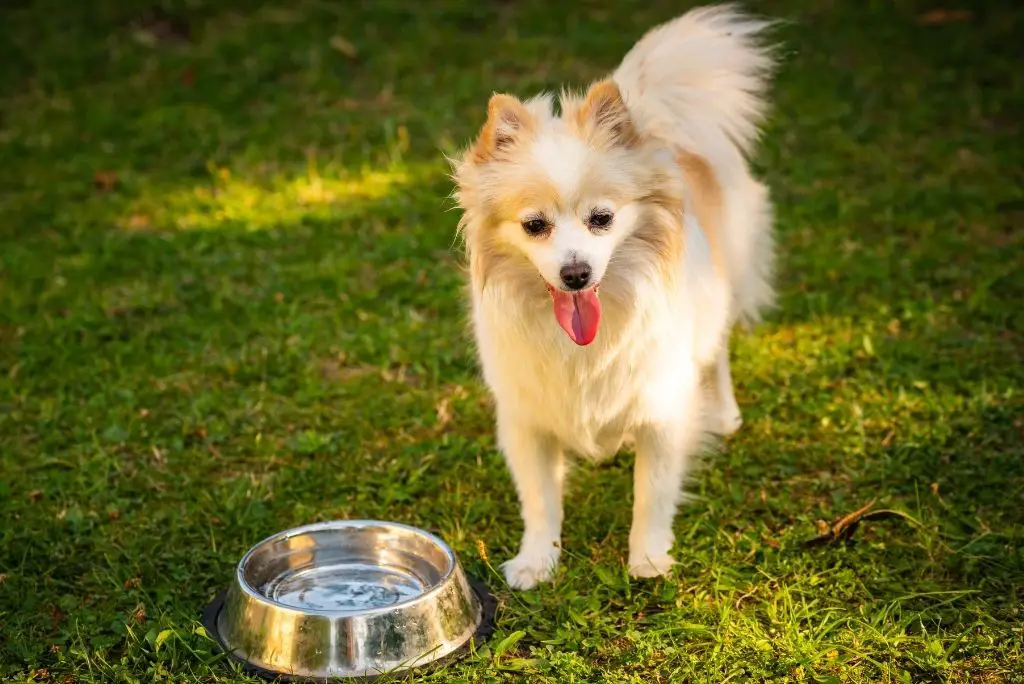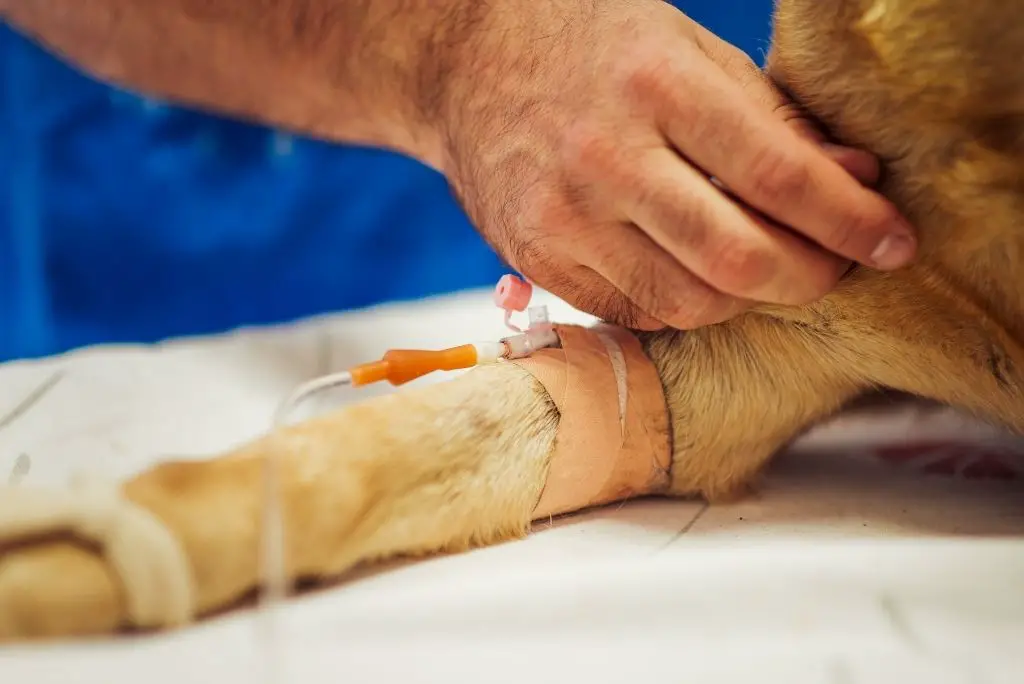It’s normal for dogs to gain and lose water throughout the day. Dogs lose water through panting, breathing, urinating, defecating. They compensate for these losses by eating and drinking. When a dog is dehydrated, that means its body lost more water than what it took in. Water is vital for every living organism and dogs aren’t an exception. Their bodies need water for all bodily functions such as lubricating joints, cushioning internal organs, controlling body temperature, and helping digestion.
When dogs don’t have enough water in their bodies there’s a reduction in their blood flow and volume of fluids. This leads to lower delivery of oxygen to their organs and tissues. In severe cases, this can lead to organ failure and death.
Article contents
What causes dehydration in dogs?
As mentioned earlier, a dog is dehydrated when it loses more water than it takes in. This can happen when they don’t have access to fresh and clean water. Dogs should have enough water available throughout the day so they don’t run out of it, no matter what the situation is. Acute attacks of vomiting and diarrhea, heatstroke, and fever can speed up dehydration in dogs. There’s an increased risk of dehydration in puppies, senior dogs, dogs that are nursing, and toy breeds.
But all dogs can suffer from dehydration if they don’t eat or drink enough. Some dogs also tend to not drink much water on their own or when they’re out running and playing. In some cases, dehydration can be a symptom of an underlying cause. It can be an indicator of bigger problems such as diabetes, kidney disease, and some types of cancer. It’s also possible that dogs refuse to drink due to nausea, lethargy, and pain.
Dogs should drink approximately 1 ounce of fresh and clean water for every pound they weigh, per day. How long a dog can go without water will depend on its size, breed, and health condition, but, even a healthy dog will struggle to make it more than a few days without water.

Common signs that your dog is dehydrated
Dogs can’t tell us when they’re thirsty. This means it’s up to dog owners to be aware of the most common signs of dehydration in dogs so they can act quickly. These signs are:
- Lethargy
- Panting
- Dry and sunken eyes
- Dry and sticky gums
- Loss of appetite
- Thick saliva
- Dry nose
- Vomiting
- Loss of skin elasticity
There are two tests you can do on your dog to check for dehydration. One of them tests the skin’s elasticity and the other tests your dog’s gums and blood flow. To test your dog’s skin elasticity, you’ll need to pinch a little bit of skin on the back or top of your dog’s head using your thumb and forefinger. If, when you release the skin and it immediately springs back into place, your dog is well hydrated. The longer it takes for that bit of skin to move back into place, the more dehydrated your dog is.
When dogs are very skinny or obese, the skin may not go back into place completely. This isn’t necessarily a sign that they’re dehydrated. This test may not be as accurate in dogs with thick or long-haired coats, in dogs with excessive skin folds, and in senior dogs as they have already lost their skin’s elasticity due to their age.
In these cases, you should use another test which is to check your dog’s gums. In this test, you’re feeling whether your dog’s gums are sticky and dry or not. At the same time, you’ll also check your dog’s blood flow by testing the capillary refill time. For this test, you’ll need to gently press your finger against your dog’s gums and then remove it. When your dog is well hydrated, the area you pressed will be white for a second and immediately return to its pink color. When a dog is dehydrated, this will take longer.
How to treat it and when should you see a vet?
Dehydration is a dangerous vicious cycle. When dogs are dehydrated, they can lose their appetite, so they eat less. Eating less will make dehydration worse. That’s because it eliminates the water intake they would get from their food.
When dogs lose large amounts of water, drinking is rarely enough to compensate for those losses. Ideally, you’ll want to prevent dehydration by ensuring there’s plenty of fresh and cool water available, especially in hot weather. To avoid severe consequences, you should take your dog to the vet as soon as you notice any changes in its urination or drinking habits.
Whenever vets suspect a dog is dehydrated, they’ll do a full-body examination so that they can understand the severity of the dehydration and identify a possible cause.
It can be an obvious reason such as an upset stomach or heatstroke. In some cases, the cause may not be as clear or can be an indicator that something more dangerous is going on. Therefore, it’s not strange for a vet to ask for some tests such as blood samples and x-rays.
Only a vet is able to treat severe cases of dehydration in dogs. That’s because the most effective way to treat it is by administering fluids through an intravenous catheter. This will replace any fluids that were lost and prevent it from getting worse.
Making sense of it all
Dehydration in dogs is the result of a dog losing more water than it consumes. When untreated, it can lead to organ failure and death. To prevent dehydration, ensure your dog always has fresh and clean water available. Seek veterinary attention as soon as you notice any changes in your dog’s urinating or drinking habits.
Some dogs are more at risk than others, but all of them can suffer from it. Make sure to closely monitor your dog during hot weather and when it’s exercising. Those are the times where it may need more water than normal.

